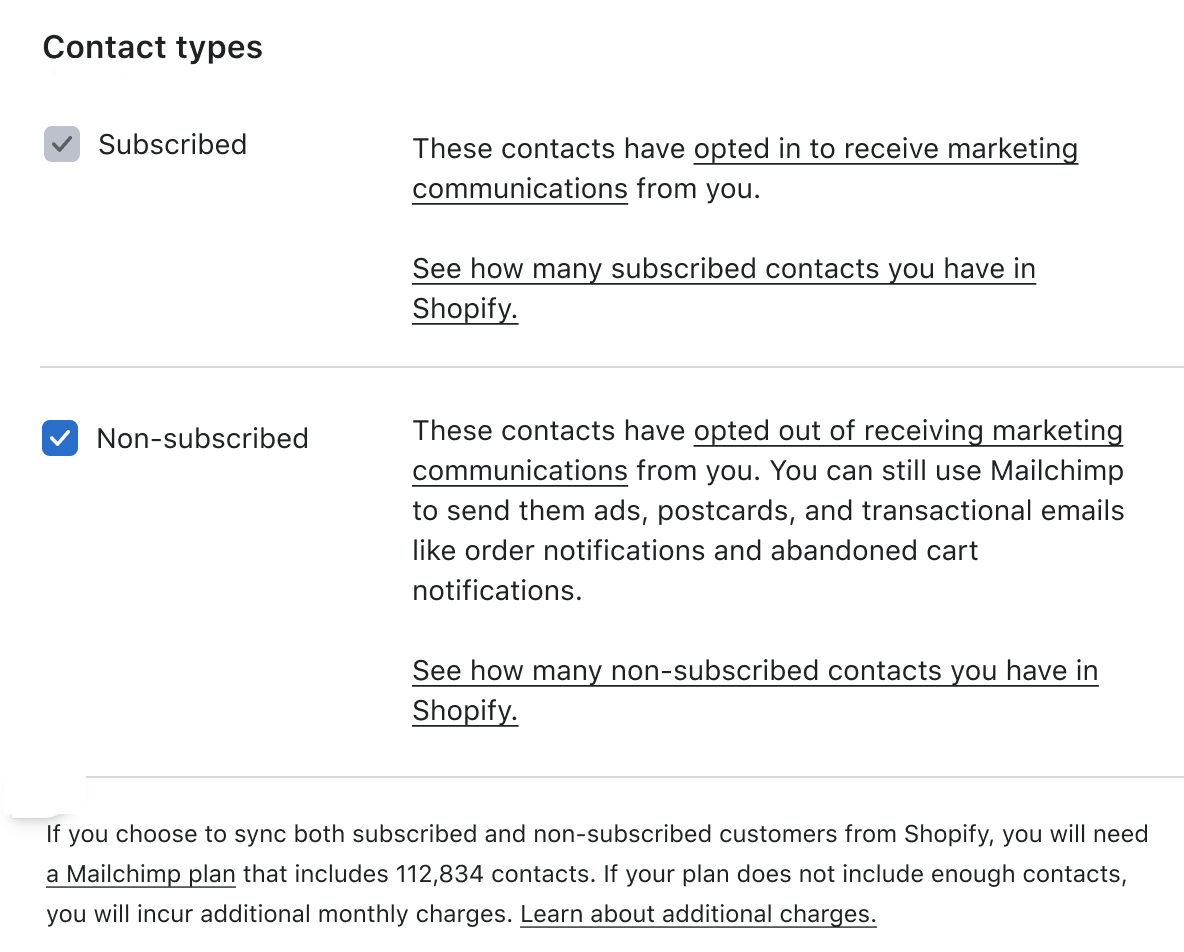Switch from Mailchimp for Shopify [Legacy]
Learn how to switch your integration, and its automations, from Mailchimp for Shopify [Legacy].

Get the job done with a pro
From training to full-service marketing, our community of partners can help you make things happen.
Use Mailchimp for Shopify to automatically send your Shopify customer and order data to Mailchimp. After you connect, you can create targeted e-commerce emails and text and track how well they work, generate product recommendations, and more.
In this article, you’ll learn how to connect and disconnect Mailchimp for Shopify.
Note
If you're using the legacy Mailchimp for Shopify, connecting the new Mailchimp for Shopify requires a few extra steps. To learn more, check out how to Switch from Mailchimp for Shopify [Legacy].
To watch this video, you need to accept Performance and Functionality Cookies.
For more info, check our cookie policy.
To watch this video, you need to accept Performance and Functionality Cookies.
For more info, check our cookie policy.
We're sorry. Due to a technical issue, the video is currently unable to load. Please try again later.
Here are some things to know before you begin this process.
When you connect Mailchimp with Shopify, we’ll update your Mailchimp audience with each customer’s email address, name, order information, and custom fields like birthdays and phone numbers. We'll also start to sync some customer behavior, such as what pages your customers visit to your Mailchimp account.
To learn more about how customer and behavioral data is synced between Shopify and Mailchimp, check out About Mailchimp for Shopify Syncing.
You’ll collect more contacts as new people make a purchase, and future orders will continue to sync automatically. All fields except discount codes sync in real time. Discount codes sync every few hours, but you can always trigger a manual syncing on the Mailchimp app page in your Shopify store.
To connect your Shopify store to Mailchimp, follow these steps.


To sync all tags along with your customers, scroll to Sync customer tags and click the Sync all tags checkbox. This is an optional step.

That's it! We'll continue to sync your Shopify store information to Mailchimp. The time it takes to sync depends on account data and the number of orders in your store. Once the sync is complete, you’ll see totals next to your product, customer, and order listings on the Mailchimp app page in your Shopify store.
Now that you've connected Mailchimp for Shopify, keep in mind the following details:
After you've connected your Mailchimp and Shopify accounts and completed your initial sync, visit the Manage Mailchimp for Shopify page to view details for your store and manage settings for your integration. Check out Manage Mailchimp for Shopify to learn more.
You can also visit the following guides and tutorials to learn more about what you can do with Mailchimp.
Add a Pop-Up Signup Form to Your Website About Marketing Automation Flows Getting Started with Segments
To disconnect Mailchimp for Shopify, you’ll need to revoke API access in Mailchimp, and then uninstall the app from your Shopify account. When you disconnect, you can choose whether to keep or remove your Shopify data from your Mailchimp account.
To revoke API access for Shopify, follow these steps.
Good job! Next, you’ll need to disconnect the app in Shopify.
To uninstall Mailchimp for Shopify, follow these steps.
That’s it! You’ve disconnected Mailchimp for Shopify.
Technical Support

Have a question?
Paid users can log in to access email and chat support.
Learn how to switch your integration, and its automations, from Mailchimp for Shopify [Legacy].